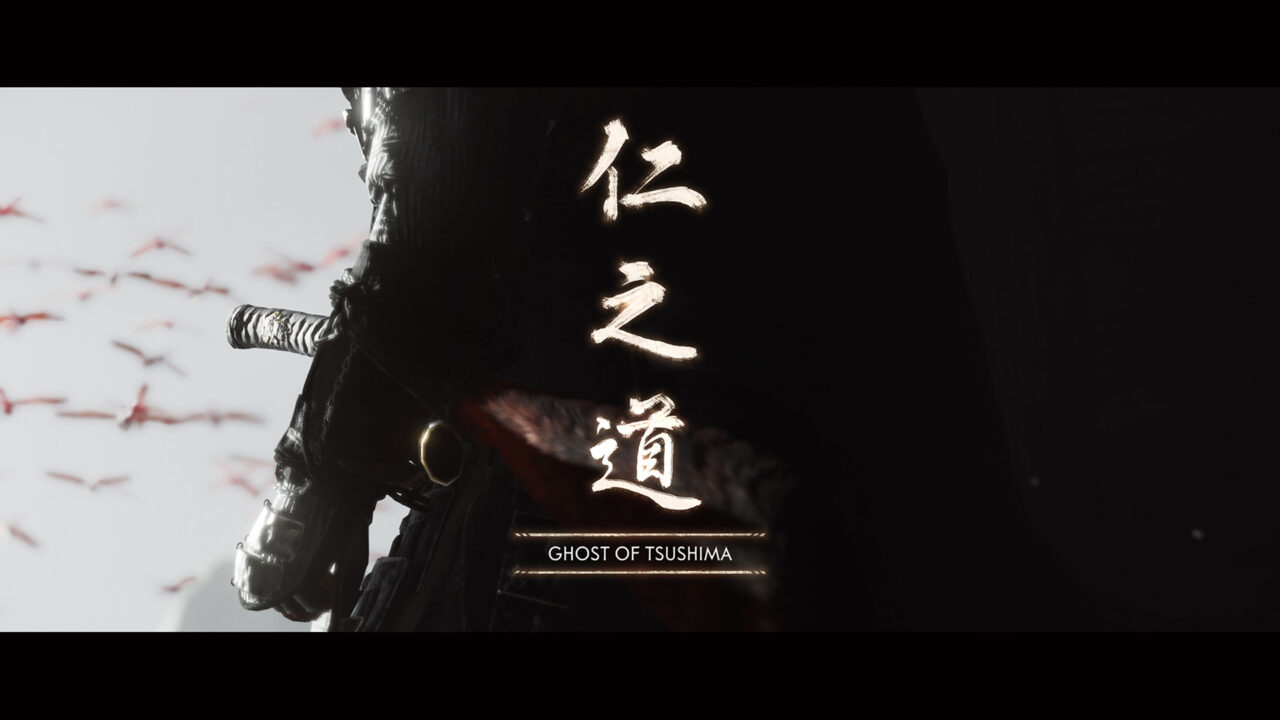The era of the PlayStation 4 is coming to an end and Sony has closed it out with a major exclusive from Sucker Punch Productions, one of their first-party studios that began the console generation. Interestingly, Ghost of Tsushima is only the second full video game release from the studio for the PS4 after 2014’s Infamous: Second Son, which goes to show just how much time Sucker Punch put into the game. And all that effort shows quite clearly in the finished product and makes it more than fitting to be the PS4’s last major exclusive.
Ghost of Tsushima is set on the titular island of Tsushima during the first Mongol invasion of Japan in 1274. Players take on the role of Jin Sakai, a young samurai lord that joins with the rest of the island’s samurai, including his uncle Lord Shimura, in an initial all-out battle against the invading Mongols led by Khotun Khan, the grandson of Genghis Khan. The samurai end up suffering a devastating defeat due to the Mongol’s superior numbers, tactics, and technology, and Jin only survives after being rescued by a thief named Yuna.
As one of the few remaining samurai on the island, Jin must attempt to bring together the remaining warriors of Tsushima to retake their home against the invaders. But he soon realizes that sticking to the samurai code his uncle raised him to follow, the rule of fighting his opponents openly and head on, isn’t going to be enough and that he must resort to underhanded tactics that would be considered dishonorable if he wishes to save the island and his people. This internal conflict and its external consequences becomes the core of the game’s story.
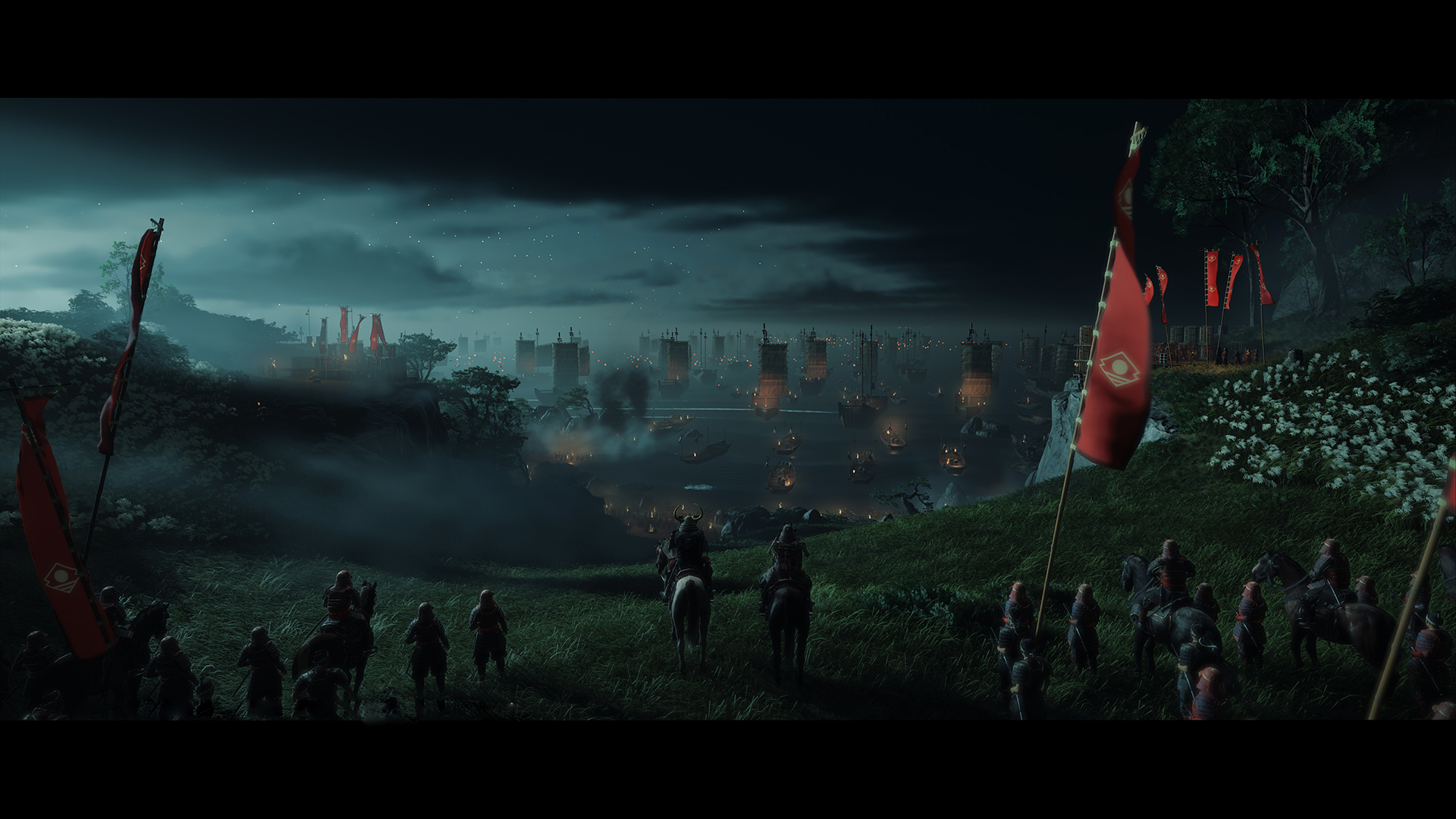
Apart from its setting and premise, the story and characters of Ghost of Tsushima are mostly fictional. Many of its elements, such as its weapons and armor, aren’t exactly historically accurate as well. But developer Sucker Punch did say that they attempted to strike a balance between historical accuracy and entertainment. And with one of their main inspirations being the samurai films of the legendary Akira Kurosawa, it isn’t surprising that many of its elements lean more towards fantasy and legend rather than authenticity.
The structure and flow of Ghost of Tsushima’s story isn’t exactly unique as well, featuring several typical story tropes such as Jin’s aforementioned internal struggle. But despite being somewhat predictable, the excellent presentation and execution of the game’s story coupled with the amazing performances of its voice acting cast helps it become incredibly engaging and an absolute treat to witness. The several striking and beautiful set pieces within the game’s story contribute to making it both engrossing and memorable.
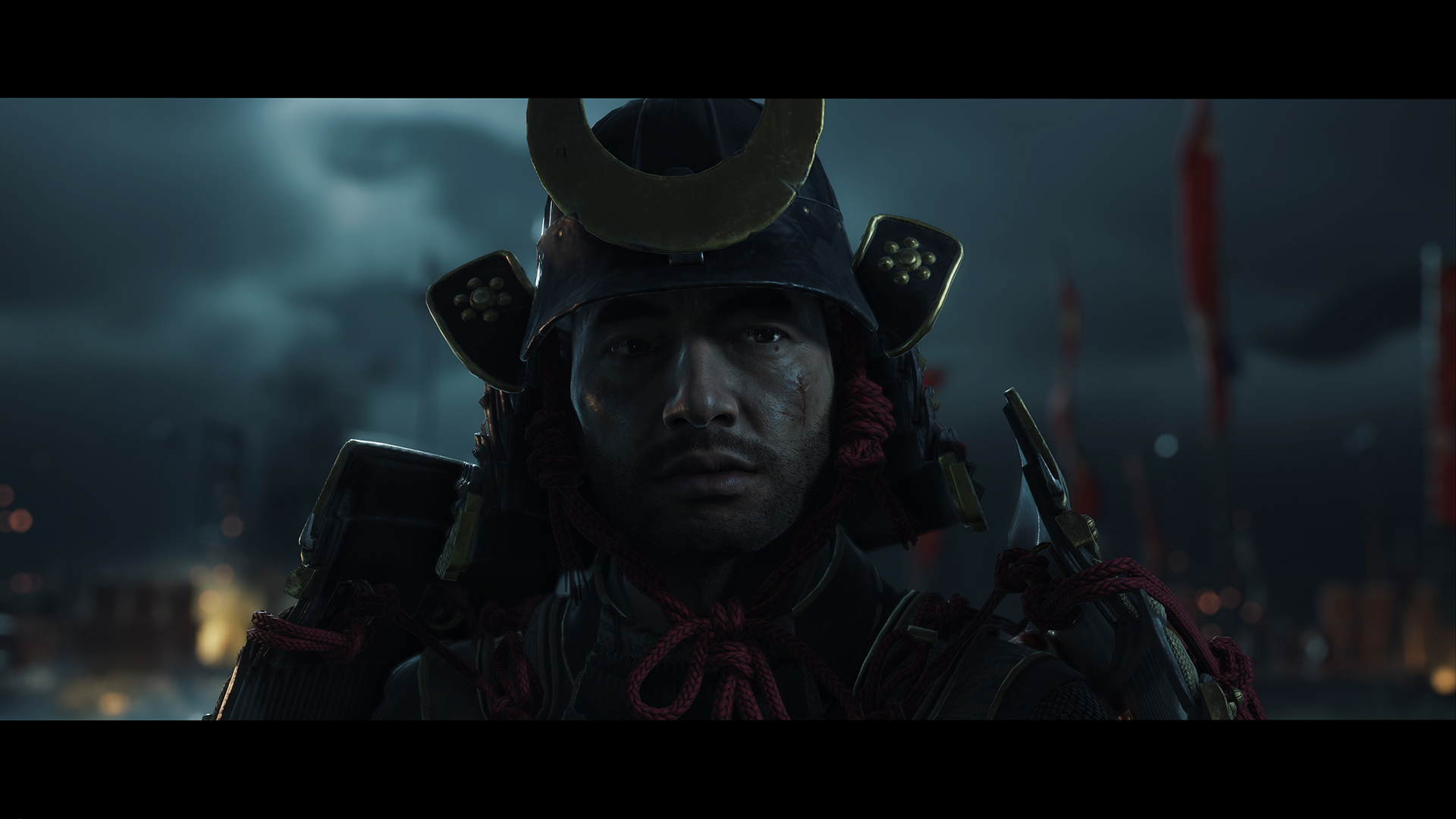
It’s All in the Presentation
Ghost of Tsushima is definitely one of the most beautiful games we’ve ever seen. It’s captivating landscapes and its countless number of picturesque moments make Jin’s adventure across the different locations across the island of Tsushima consistently awe-inspiring. Travelling on horseback or climbing the game’s numerous mountaintops are always such rewarding experiences in and of themselves. The creative liberties Sucker Punch took in crafting the island of Tsushima really paid off and offers players a backdrop that amplifies its story and gameplay tenfold.
While there are other PS4 exclusives released this year that feature visuals with higher levels of detail, such as The Last of Us Part II and Final Fantasy VII Remake, specifically in the character models and facial animations, Ghost of Tsushima’s presentation and aesthetic easily makes up for and even surpasses that gap. Coupled with the game’s amazing soundtrack and the aforementioned voice acting, the game’s splendor goes way beyond than just the visual and creates a holistic experience that’s hard to forget.
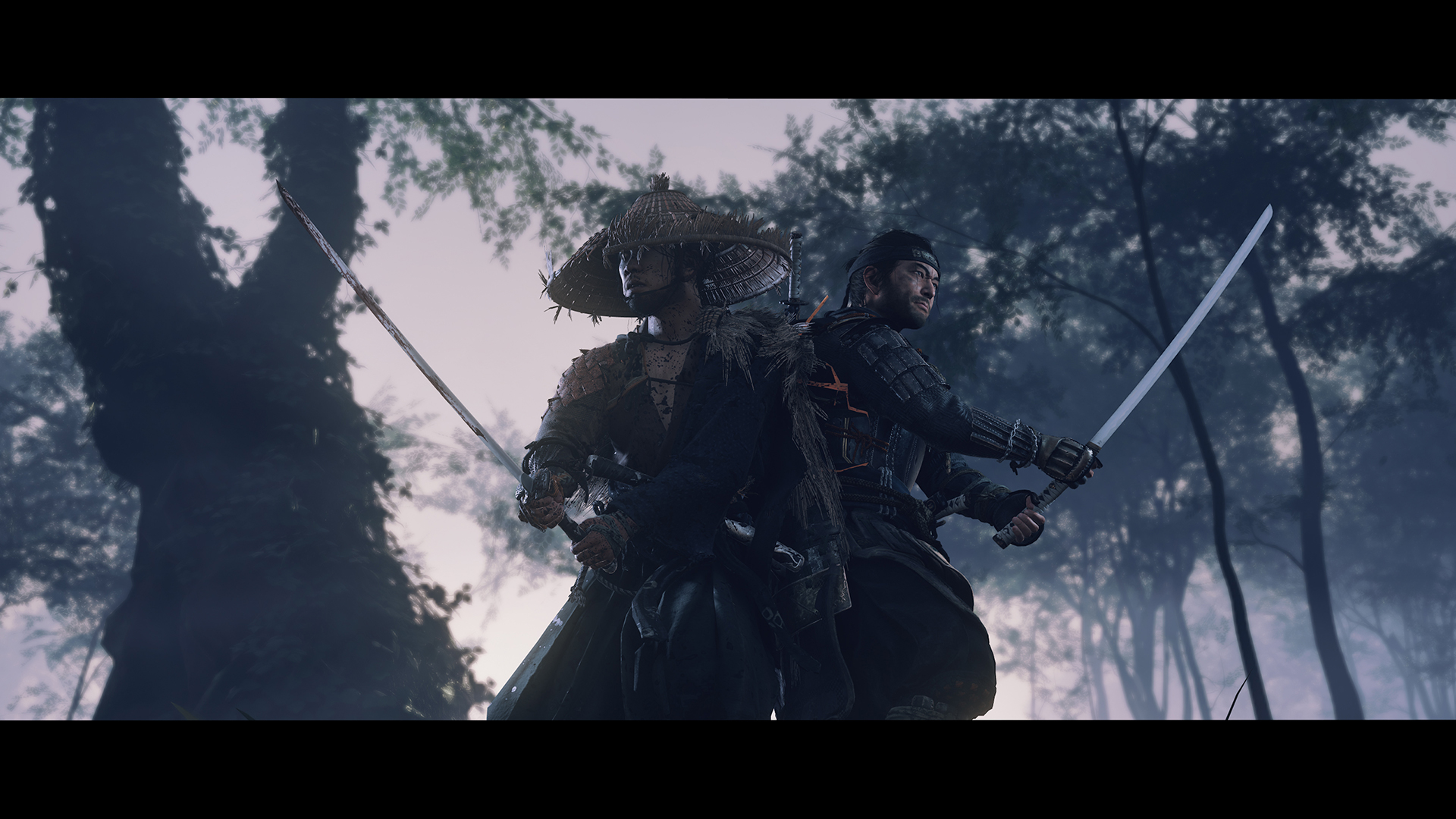
The game’s beautiful presentation extends to its other elements as well, from its menus and the skill tutorial animations to its sumi-e art cutscenes, creating an impressively cohesive look for the entire game. Sucker Punch has also included a Kurosawa Mode, in homage to the filmmaker whose movies massively inspired the game. The special mode makes the game look like a classic black and white samurai film, complete with film grain and exaggerated wind effects. While it’s incredibly amusing to play in Kurosawa Mode, it becomes slightly more difficult to distinguish some of the game’s elements due to the lack of color.
With how beautiful the visuals of Ghost of Tsushima are, it isn’t surprising that Sucker Punch has included a photo mode and it’s one of the best ones we’ve seen in a console game so far, which isn’t surprising given how good the photo mode of Infamous: Second Son was. The number of options available in Ghost of Tsushima’s photo mode, including the ability to change the weather as well as time of day, among others, gives users a plethora of ways to show off not only their current playthrough but also their skills in photography and composition.
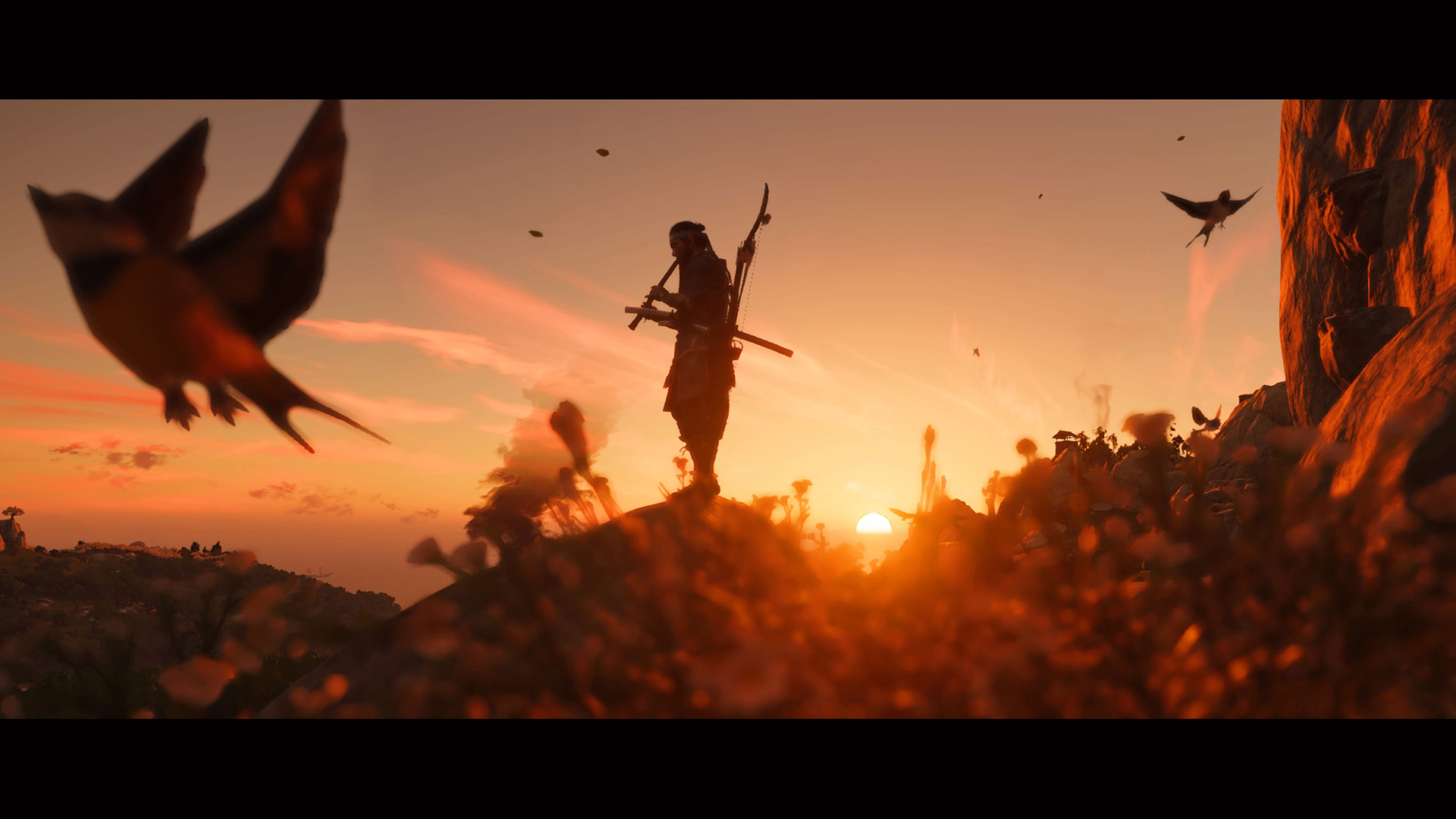
The Way of the Warrior
Along with the usual and expected gameplay elements of open-world, action-stealth games, it’s also pretty clear that Ghost of Tsushima takes a lot of inspiration from several other popular titles. From its combat mechanics to many of its side activities and exploration, many of Ghost of Tsushima’s gameplay may look and feel rather familiar. Regardless, Sucker Punch was able to execute and blend most of the gameplay elements impressively well while also offering a few new and unique elements that stand out quite nicely.
First off, the core of the game’s combat lies in utilizing Jin’s combat stances. As you progress through the game, Jin gradually gains access to up to four stances that increase your options and effectiveness in combat. Each of the stances change Jin’s heavy attack and are designed to better deal with a specific enemy type. As an example, the first available stance is more rounded and designed to deal with swordsmen, another is meant to better handle shield-bearing enemies, and so on.
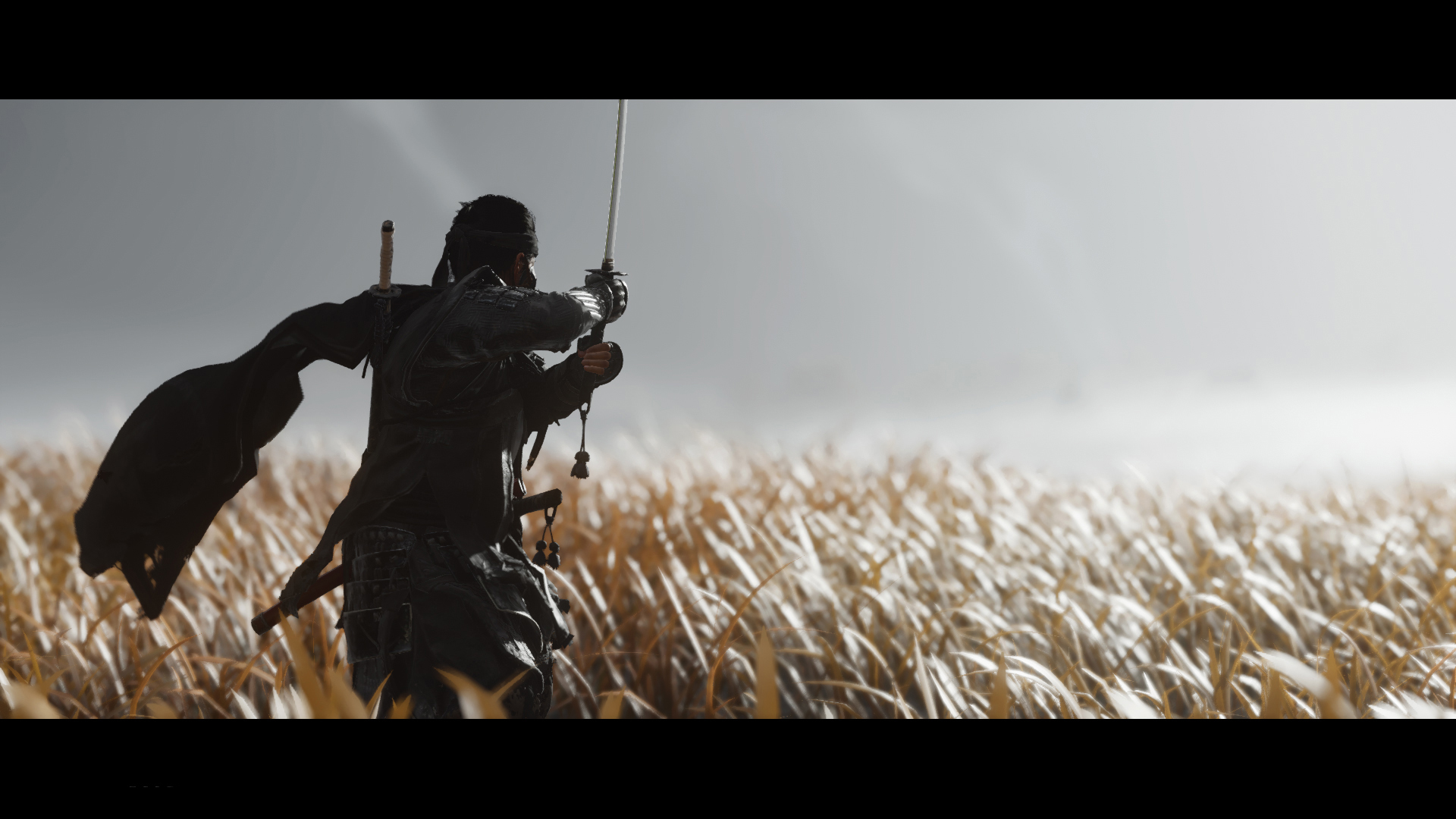
Then there’s the Ghost stance, a special stance that the player unlocks at some point in the game’s story which can be activated when certain requirements are met, such as killing a certain number of enemies in a row without taking damage. When in the Ghost stance, enemies won’t attack and will flee from Jin instead. Jin will also be able to instantly kill a certain number of normal enemies or deal a large amount of damage in duels while in Ghost Stance. It’s an interesting mechanic that gives players a strong option for opening or closing out a fight.
Duels are one of the new and unique gameplay elements that Ghost of Tsushima has to offer. Rather than traditional boss fights that maintain the same combat mechanics as normal open-world combat, duels in Ghost of Tsushima change everything from the camera lock to the abilities you have access to. The game’s duel system is one of the most impressive elements of Ghost of Tsushima and effectively makes use of not only its combat mechanics but also its visuals and music to create some of its best cinematic moments.
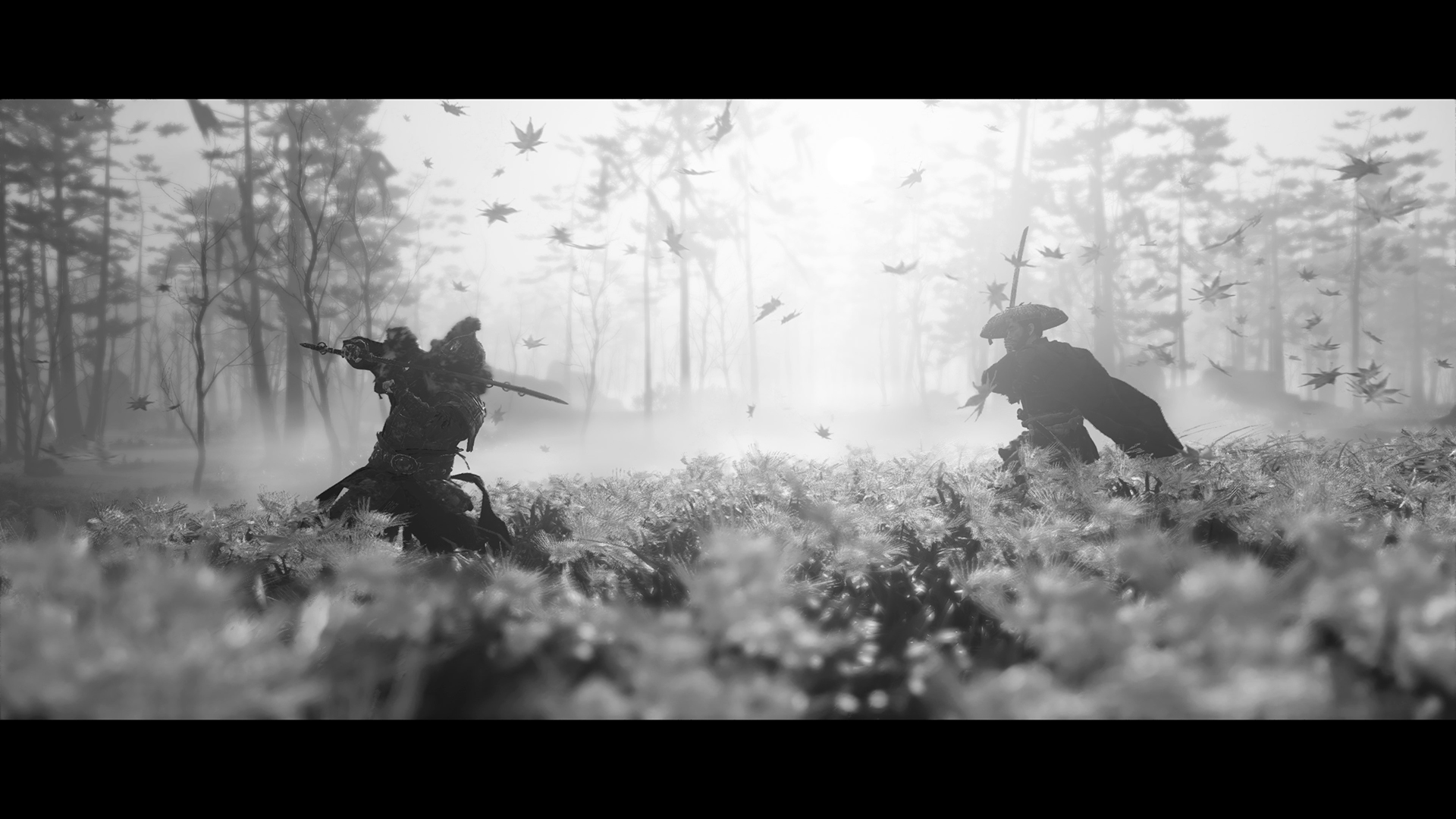
For its open-world encounters, whether it’s running into an enemy patrol or liberating one of the many outposts sprawled across Tsushima, players are given the typical upfront open combat and stealth options to go about them. But Sucker Punch has added an additional mechanic for the former option with its stand offs, which initiates a one-on-one timing based combat event. If successful, you end up with one less enemy to deal with, or more when the right skills are unlocked. It’s an interesting mechanic that adds another layer of gameplay to the combat.
Along with its story, visuals, and music, some of Ghost of Tsushima’s gameplay elements also contribute to make the game feel even more immersive. The game’s simple interface, which players can choose to make even simpler in the options menu, as well as the lack of a conventional targeting mechanic for its open-world fights helps make the combat feel significantly more fluid, immersive, and exciting, especially when you utilize all the skills and tools Jin has at his disposal.
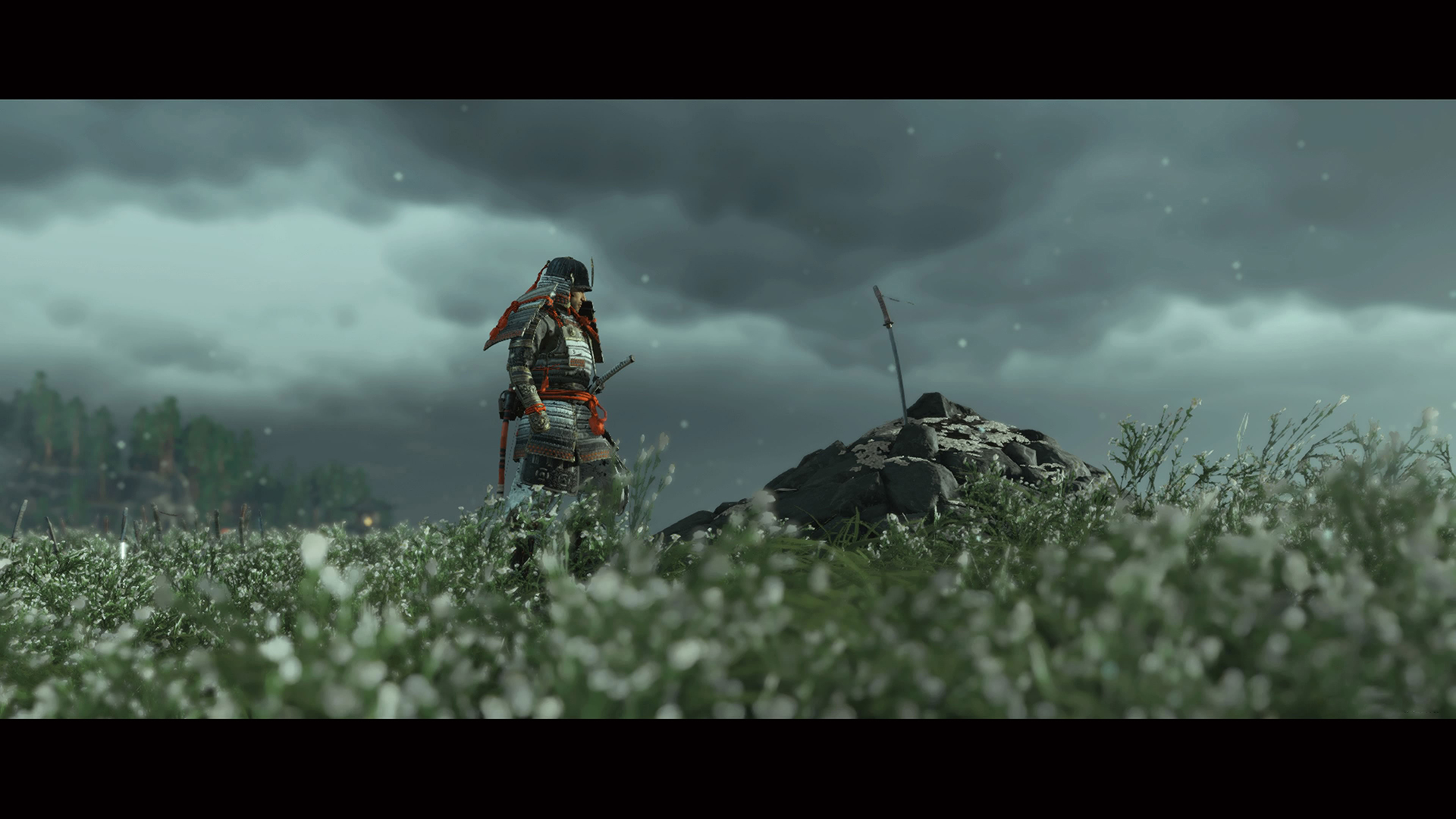
Iron Sharpens Iron
One of the best parts of Ghost of Tsushima’s gameplay is the way it handles its progression and its difficulty curve. While the game does feature some of the typical stat-based progression seen in most action RPGs, especially with its items, it still mainly focuses on either increasing or bettering your options in combat or stealth with its plethora of skill trees. The game’s skill trees are mainly divided into Jin’s core samurai abilities, his combat stances, his stealth tools and abilities, as well as skills to improve world exploration.
Even though each of Jin’s skill trees are mostly linear and don’t really provide players a lot of options apart from choosing which tree to level first, the bonuses they provide are capable of significantly changing how you’re able to deal with many of the game’s encounters. From being able to dodge or parry enemy attacks and following up with counterattacks to extended combos and being able to use Jin’s tools more often. As for the exploration-related upgrades, they significantly help the player find specific points of interest in the map.
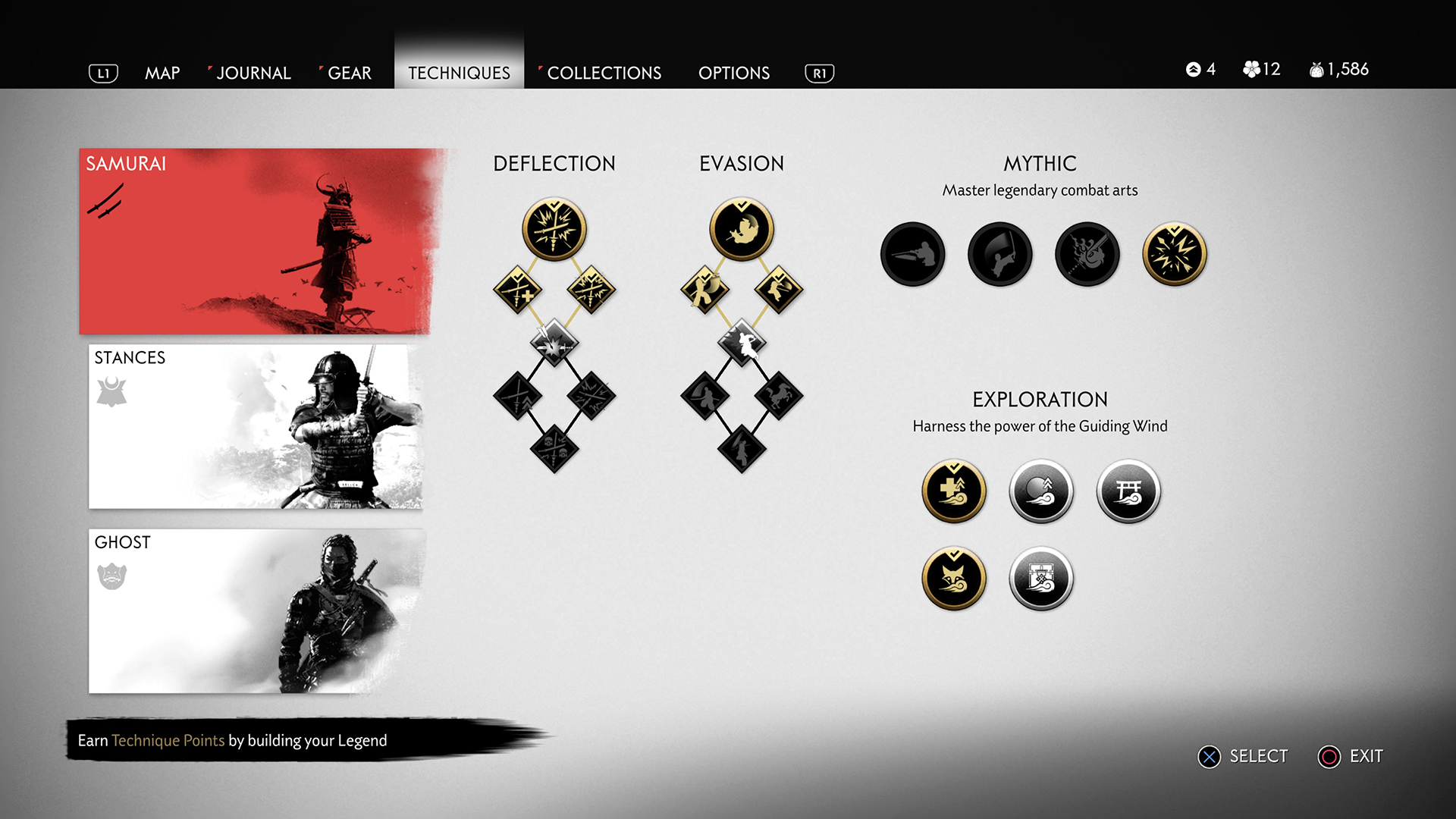
The rest of Jin’s stat boosts are gained from his equipment, which are relatively limited as well. The game lets players change Jin’s armor, mask, and helmet, but only his armor comes with buffs and effects while the latter two are simply cosmetic. Apart from his armor, players will be able to equip up to six Omamori Charms to gain certain buffs and effects both in and out of combat. The look of Jin’s blades, a katana and tanto, can also be changed with unlocked skins. The rest of Jin’s armaments include a bow with an array of arrow options, throwable kunai, a blowgun and darts, and throwables such as bombs and wind chimes.
Lastly, apart from the game’s typical skills, tools, and equipment, the game also features several legendary equipment and skills that players can unlock via special side quests called Mythic Tales. The rewards from these Mythic Tales are some of the best equipment and skills in the game and give Jin a rather significant boost in his effectiveness in combat.
There does come a point where Jin starts feeling overpowered, especially when it comes to open-world combat, once he unlocks most of his skills and tools as well as obtaining most if not all of the rewards from the game’s Mythic Tales. But in spite of this, the game is still able to remain challenging, specifically due to its duels, where Jin loses access to most of his skill and tools that make him feel overpowered, as well as some of the game’s scripted encounters that are designed to be more difficult and wear the player down.
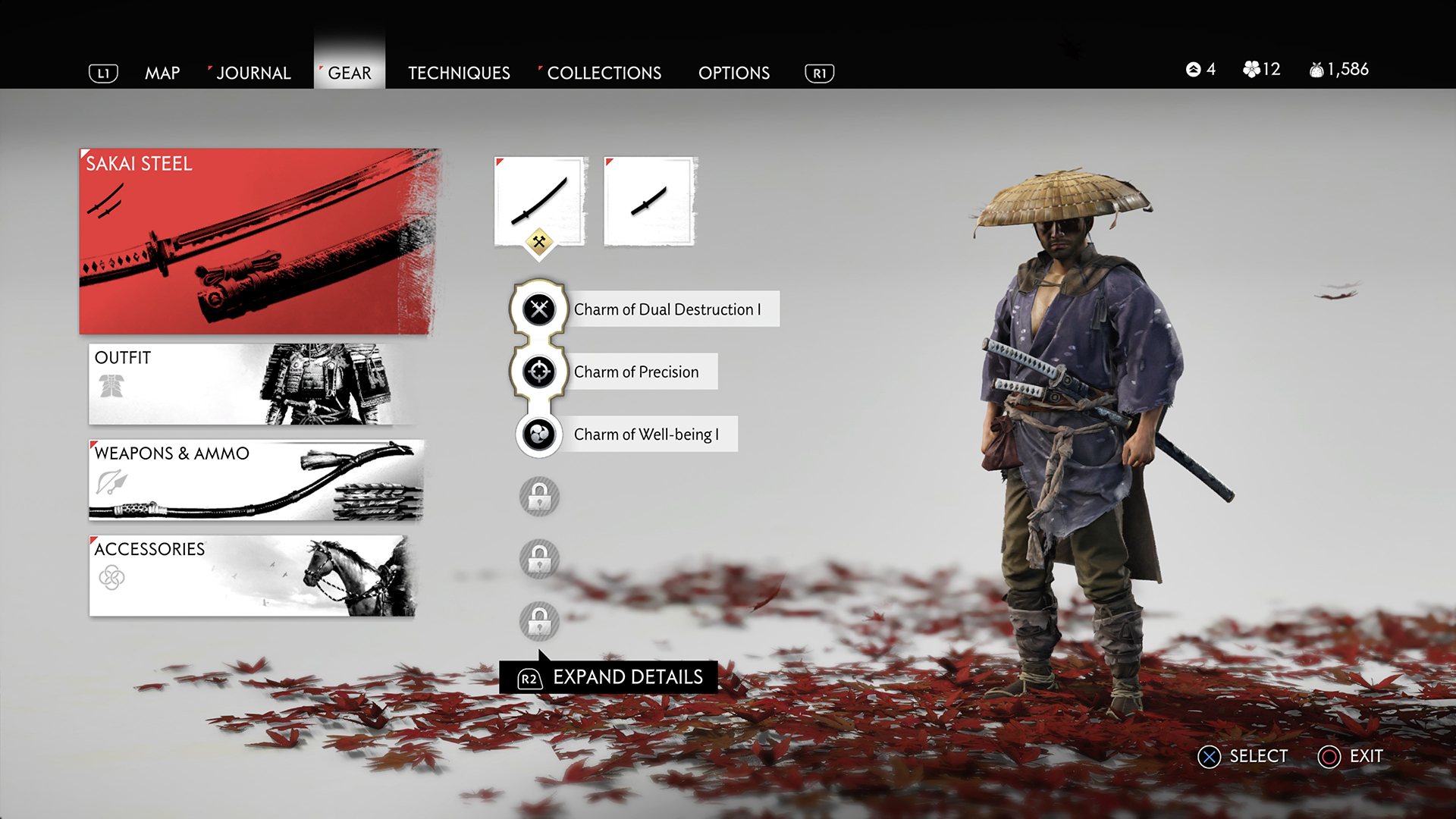
Chase the Wind
Apart from hosting a plethora of beautiful landscapes and structures, the island of Tsushima also features a staggering number of notable locations and side activities. From points of interests such as shrines and hot springs to hidden treasures, puzzles, and a lot more. The game doesn’t provide an on-screen minimap to help players navigate their surroundings and instead encourages them to truly explore the map and appreciate its visuals. And instead of a typical compass to guide players to their objective, the game utilizes what it calls the Guiding Winds, which literally rush in the direction of the current objective.
Ghost of Tsushima also features a quite a significant number of side quests and random encounters across the vast island of Tsushima. Side quests are divided into three main categories including the Tales of Tsushima questlines that focus on each of Jin’s companions, typical side quests, and the aforementioned Mythic Tales. The Tales of Tsushima questlines lets players explore the stories of Jin’s companions to better understand their characters and motivations, which gives the game’s main story a lot more substance, complexity, and depth.
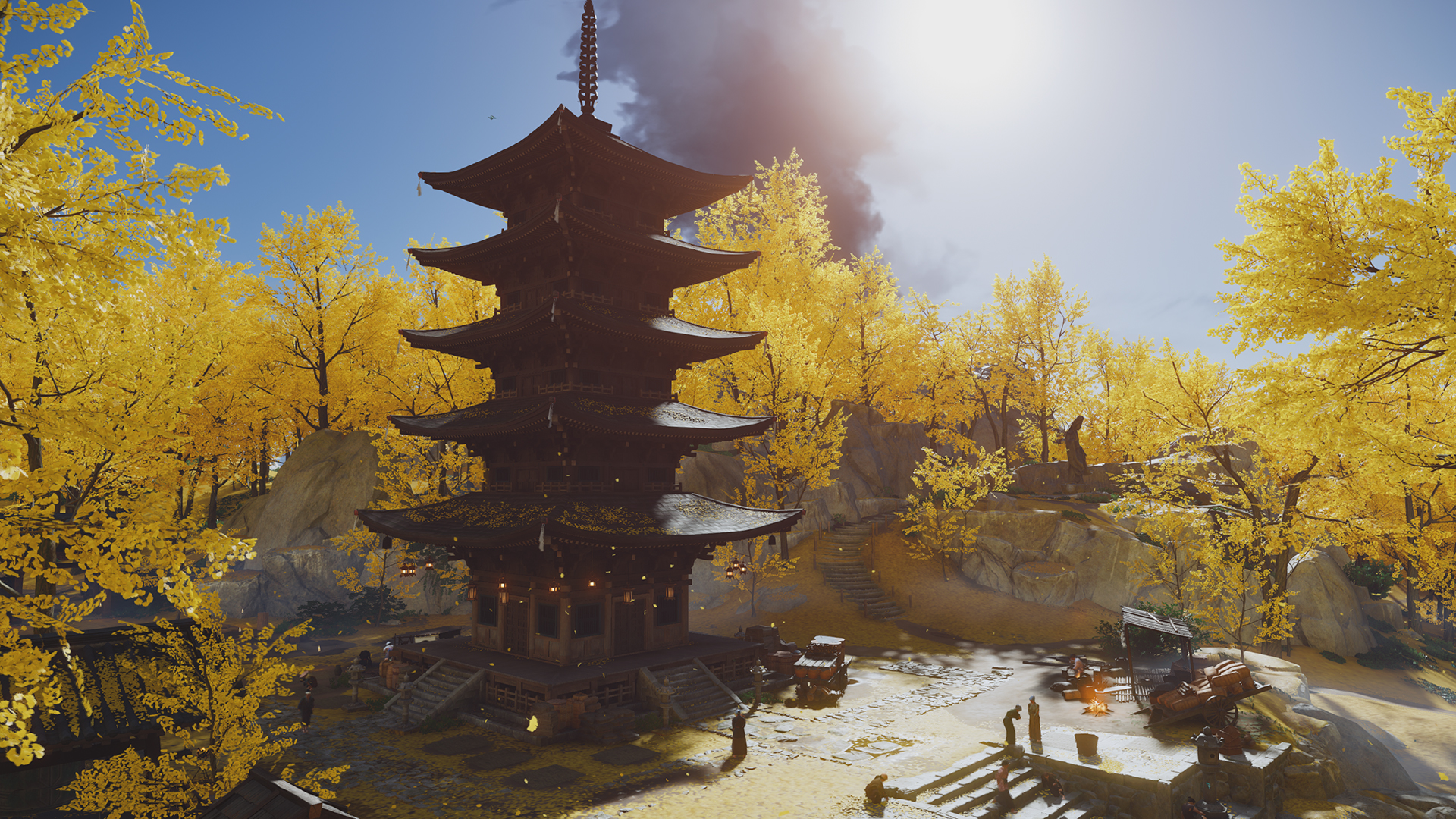
Between the game’s main storyline, the large amount of different side quests, and the plethora of side activities, there’s never a shortage of things to do in the game. The amount of side activities in Ghost of Tsushima are so incredibly numerous that it can, at times, feel like a detriment as they often end up breaking the flow of the player’s current questline and may end up delaying or distracting the player from some of the game’s best parts. On the other hand, some of Ghost of Tsushima’s best moments of story and gameplay are also found in its side quests and activities whilst exploring its world.
Conclusion
The amount of time, effort, and care Sucker Punch invested into Ghost of Tsushima, being only its second major release for the PS4, is clearly evident in all of its elements. It’s breathtaking visuals, complex yet seamless gameplay, and its wide open world with its humongous supply of gameplay and story experiences blend together into an amazing amalgamation. While it’s story and gameplay does feature some recognizable beats, their presentation and execution effectively make them stand out from their contemporaries. Ghost of Tsushima is most definitely one of the best games of the year, arguably one of the greatest games of this console generation, and a great way to close out one of Sony’s most successful eras.


